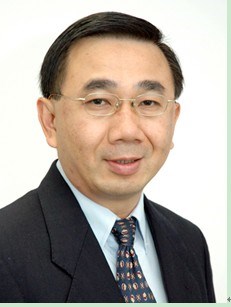报告题目1 :Soft nanostructures-current status and future trends
报告人:Prof. Michael K.C. Tam
Department of Chemical Engineering and Waterloo Institute for Nanotechnology, University of Waterloo, Canada
报告时间:2012年10月23日(星期二)下午14:00-15:30
报告地点:独墅湖校区907号楼1445报告厅
报告题目2 :Development of polypeptide hybrid polymer systems for biomedical application
报告人:Prof. Michael K.C. Tam
Department of Chemical Engineering and Waterloo Institute for Nanotechnology, University of Waterloo, Canada
报告时间:2012年10月24日(星期三)上午9:00-11:00
报告地点:独墅湖校区907号楼1445报告厅
欢迎感兴趣的师生踊跃参加!
报告摘要1:
Nanotechnology is anticipated to be the next technological wave that will drive many of the innovations in science and engineering. Self-assembled structures can exist in many different forms, such as spherical micelles, rod-like micelles, bi-layers, vesicles, bi-continuous structure etc. Most biological systems are basically comprised of many of these organised structures arranged in an intelligent manner, which impart functions and life to the system. This talk will focus on a class of nanomaterials that is considered “soft”, where their microstructure can be tuned and manipulated by controlling the chemical composition and external environment. We will review and discuss several classes of soft nanomaterials, such as block copolymers, functional colloids, supramolecular polymers, dendrimers, polymer blends and nanocomposites, carbon based nanomaterials and biomimetic systems. The applications of these soft nanomaterials in various industrial sectors will be discussed.
The talk will also examine future trends in soft nanomaterials, where the impact of current materials design using traditional carbon sources, such as crude oil will be evaluated. New opportunities in the use of sustainable and renewable materials in the design of soft nanomaterials will be examined. I will end the talk by exploring the applications of renewable soft nanomaterials in addressing future challenges in three key sectors, namely water, environment and energy.
报告摘要2:
A new hybrid amphiphilic system between a polyacrylic acid (PAA) synthetic segment, and a hydrophobic beta-sheet forming peptide segment, poly(L-valine) (PLVAL) was synthesized using a combination of Atom Transfer Radical Polymerization, Click Chemistry, and Nickel catalyzed ring opening of L-valine N-carboxyanhydride. This is the first reported on the use of Click Chemistry as an intermediary step for the w-amino functionalization of polymers to obtain macroinitiators that are free from deactivating or interfering molecules for subsequent Ni-catalyzed ring opening reaction. The efficiency of the end-group functionalization in the macroinitiator is about 90%. Three different PAA-b-PLVAL hybrid copolymers with molecular weight range of 8000-15000 Da and Mw/Mn < 1.3 were prepared by varying the monomer to macroinitiator ratio. This combined synthetic approach can potentially be extended for the synthesis of a multitude of other peptide hybrid systems and hence will be of interest in the preparation of peptide hybrid systems.
The self assembly of four hybrid poly(acrylic acid)-block-poly(l-valine) (PAA-b-PLVAL) block copolymers i.e. PAA40-PLVAL100, PAA80-PLVAL100, PAA80-PLVAL80, and PAA80-PLVAL60 was investigated. Formation of core-shell spherical micelles was observed and it correlated with the extent of b-sheet ordering in PLVAL hydrophobic domains. PAA80-PLVAL60, having the lowest b-sheet content (12%) existed only as random aggregates at pH < 5 and in an unaggregated state at high pH. The b-sheet formation also produced unusual pH dependence of the micelles, where the swelling of micelles occurred only within a narrow degree of deprotonation (a) range of between 0.15-0.2 and 0.4-0.5 for PAA80-PLVAL80 and PAA80-PLVAL100 respectively. Additional role of the length of PAA segment was identified for providing sufficient shielding to the hydrophobic core to prevent further association into large compound micelles, as was observed for PAA40-PLVAL100.
Michael K.C. Tam教授简介
Prof. Michael Tam obtained his B.Eng. and Ph.D. degrees in Chemical engineering from Monash University, Australia in 1982 and 1991 respectively. He spent 18 months on a postdoctoral fellowship at the Department of Chemical Engineering, McMaster University Canada, and subsequently taught at Nanyang Technological University, Singapore for 15 years. In June 2007 he joined the Department of Chemical Engineering, University of Waterloo as a tenured full professor, and holds the position of University Research Chair in the field of functional colloids and nanomaterials. His research interests are in functional colloids, self-assembly systems, polymer-surfactant interactions, and drug delivery systems. He has published more than 200 journal articles in various fields of polymer science and engineering. His total citation exceeds 5200 with a H-Index of 41.
高分子科学与工程系
博彩平台
2012-10-17
